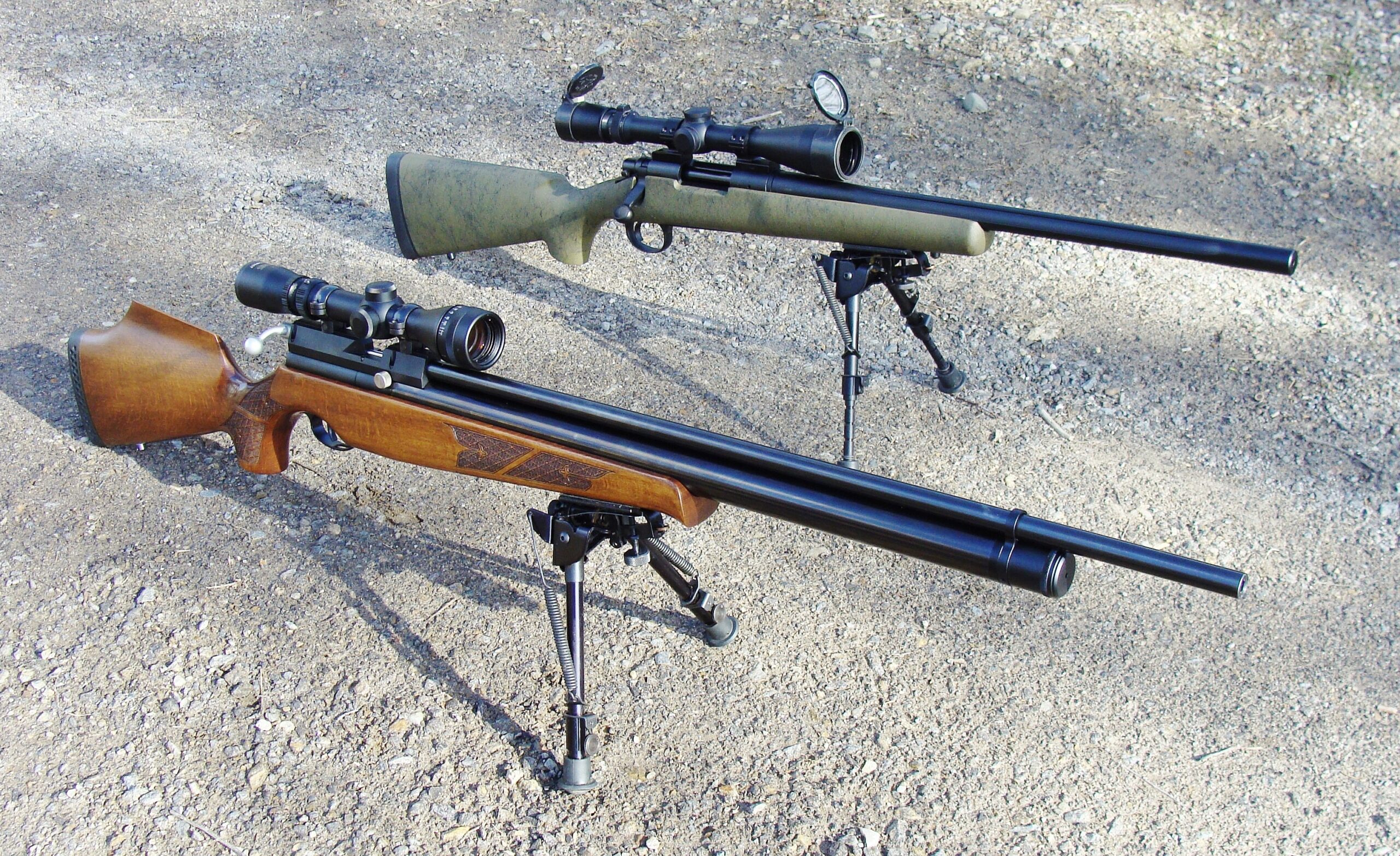If you’re wondering if pre-charged pneumatic (PCP) air rifles are worth the money, you’ve come to the right place. I used to wonder the same thing. Back when computers went mainstream, a floodgate of information suddenly became available. Like others, I suffered through the weird machinations of dial-up access in search of new info nuggets which included airguns. But not our pedestrian domestic types. This quest involved an emerging line of pre-charged pneumatic (PCP) rifles nearly unknown in the United States. I wasn’t disappointed!
by Steve Markwith, author of Air Rifles: A Buyer’s and Shooter’s Guide
As electronic details seeped through my landline, an intriguing line of high-performance PCP rifles materialized. Most were of British origin, built to a level of quality unseen among domestic airgun brands. They were racy and pretty with deep bluing and attractive stocks, designed for serious adult endeavors. Right away I knew I wanted one, but plenty of questions remained. Two biggies were where to buy one, and what it would take to fill it. Time has largely addressed the former concern thanks to a new surge of competing products. Some higher-quality airguns are even built in the USA – but it wasn’t always like that.
Modern Airgun Developments
The move to higher-end airguns gained traction in the 1970s when Dr. Beeman successfully marketed a line of European “springers.” Most of these .177 or .22-caliber “pellet guns” were barrel-cocking designs which compressed a spring-powered piston. Upon discharge, the piston surged forward in a steel cylinder behind the barrel, creating a surge of pressurized air that expelled a conventional airgun pellet. Quality was a refreshing step up from plain-Jane American pump-ups and CO-2 guns, and some could really perform. However, achieving enough power for humane small game hunting required a hefty rifle, a truly modern airgun.
The air cylinder/piston-assembly is the “engine,” so it boils down to simple physics. The feisty discharge will also create a unique reverse-recoil impulse which can destroy a non airgun-rated optic. The same dynamics can result in a “hold-sensitive” gun that requires consistent techniques for optimum accuracy. Increased power also requires substantial cocking effort. Furthermore, the spring shouldn’t remain compressed, which can complicate hunting. The latest gas-piston barrel-cockers solve the latter concern, but power still translates to size – and some advertised velocities are “optimistic.” On a positive note, a springer is a self-contained system.
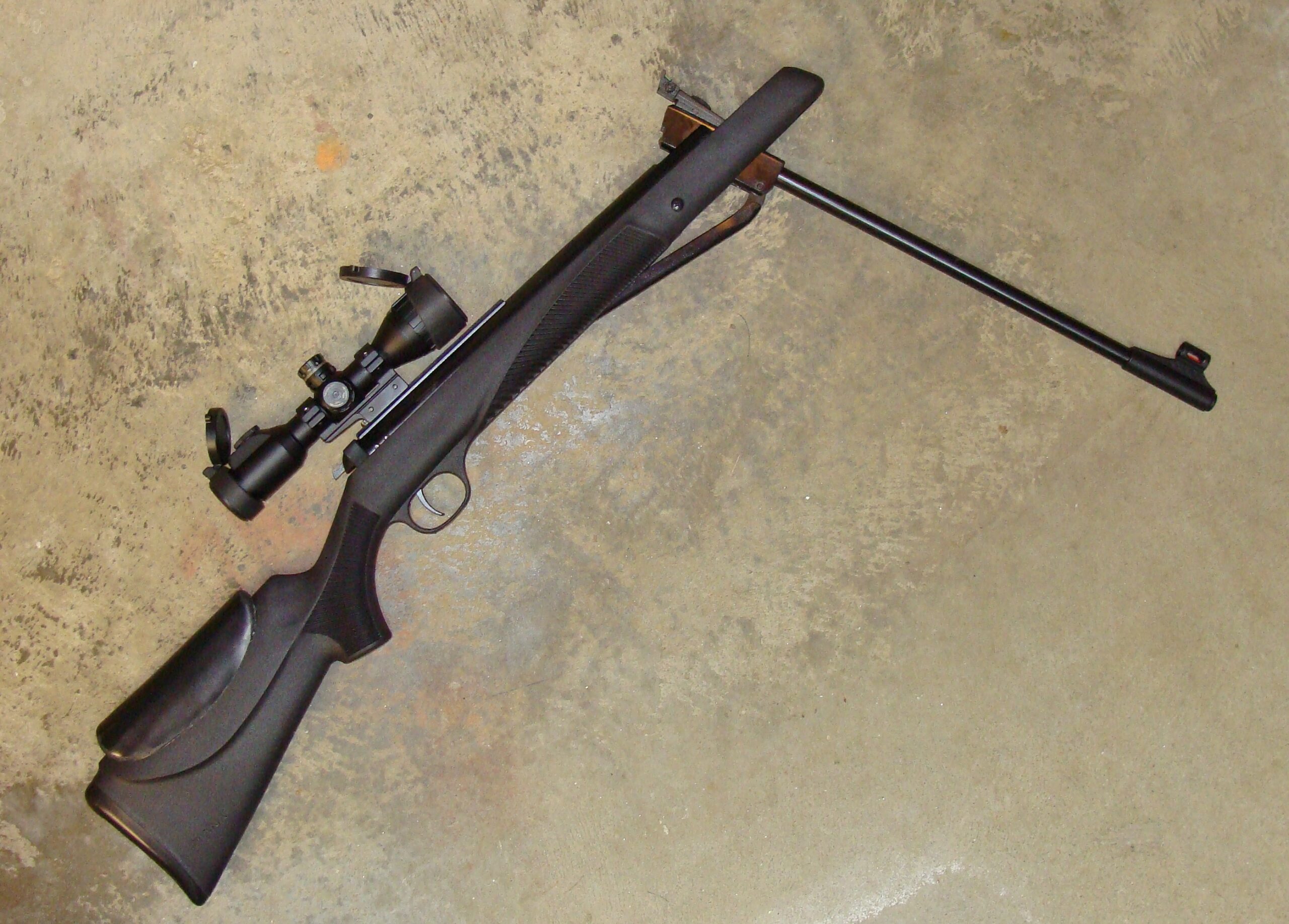
Most of the drawbacks associated with springers disappear through pre-charged airguns. Their projectiles are expelled through release of high-pressure air from an onboard reservoir (the design is far from new though; the Lewis & Clark Expedition carried a .46-caliber repeater). Some big-bore .45 or .50-caliber types only provide a few shots before refilling becomes necessary. But, a useful .22/800 fps small game hunting benchmark is easily attainable from a 6-7 pound gun capable of providing 25 shots or more.
Today, many are even repeaters that feed from rotary magazines. The downside is dependency on a fill source and the added expense of necessary equipment. I’m guessing I wasn’t the only one lost regarding the latter’s remaining mysteries.
Fortunately, a friend actually owned a PCP rifle; a true rarity at that time. He graciously loaned it to me so I could learn its ins and outs. The rifle was a no-longer produced but extremely handy single-shot .22 Falcon Carbine. Owing to its smaller size, the tubular air reservoir yielded around 24 useful shots per charge. It was pressurized by a special hand-pump.
Through my chronograph, it clocked approximately 800 fps using standard-weight 14.3 grain Crosman Premier pellets. The bare-muzzle report was downright snappy but, by spinning on its included “moderator,” the sound became stealthy-quiet. Thanks to a decent scope, I quickly discovered the Falcon’s accuracy was both outstanding and unaffected by hold-positions. Refilling was accomplished by connecting a hose on the air-pump to a QD fitting on the gun’s reservoir. Bringing it back to full pressure required around 50 vigorous strokes. Despite the effort I was immediately hooked!
PCP Air Rifle Requirements

One kicker: In many areas (including mine), it’s still hard to lay eyes on an actual pre-charged gun, let alone the equipment – or even someone in the know. Fortunately, it’s not rocket science. Pressurizing a gun involves just a few main components…
The Air Gun Itself: Many PCP guns operate at around 2900 PSI; often expressed as 190 BAR (an atmospheric equivalent). That’s some serious pressure! A few run lower, but others run at 3650/250 BAR, or even higher! Reservoir capacities also vary, but their volume is typically expressed in cubic centimeters (CCs).
A High-Pressure Air (HPA) Source: Three common sources are a special hand-pump, a scuba tank, or an airgun compressor (see below).
A Connection: The above air sources incorporate an outlet which can be connected to a short length of HPA hose (a scuba tank will also need a yoke-adapter). The opposite end of the hose connects to the gun via some type of simple air fitting.
Sometimes it’s a Foster snap-on air tool type, located on the end of the reservoir, underneath a protective cap. Other guns are filled through small fill-port that accepts a probe. Either way, the “fill adapter” on the hose completes the connection to the gun. Most pre-charged guns ship with this part because some, like mine, are proprietary. Nevertheless, most utilize the common thread pattern of 1/8 BSPP. The coupling alternatives (fittings) probably cause the most confusion for new PCP gun shoppers.
Sources of Air
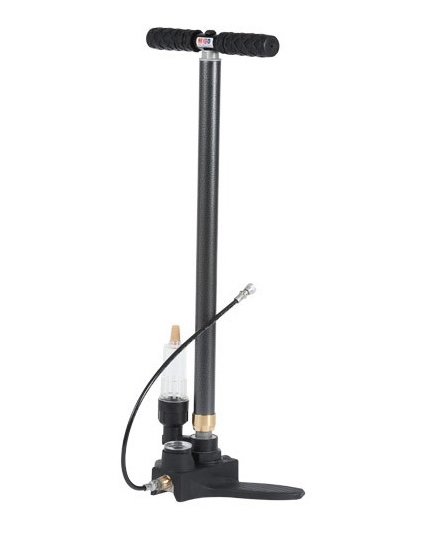
The airgun’ s operating pressure and capacity can be deciding factors for a fill source so let’s start there, beginning with the simplest system.
Hand Pump
This basic system resembles a sturdy bicycle pump, however safely putting out 3000 PSI or more requires some serious engineering! You’ll gain air independence, but also lots of exercise, so smaller-CC guns are better choices.
Many PCP reservoirs are made from steel hydraulic tubing, so accumulating water is another concern (although better pumps do incorporate moisture traps). The best cost around $200 or more and, if necessary, can be rebuilt using replacement parts. They’ll do the job but not everyone is up to the physical aspect. Geography could also factor in. For me, the Atlantic Ocean is just a ten minute drive. Unlike some arid southwestern U.S. regions (without dive shops), soggy air is a regular occurrence.
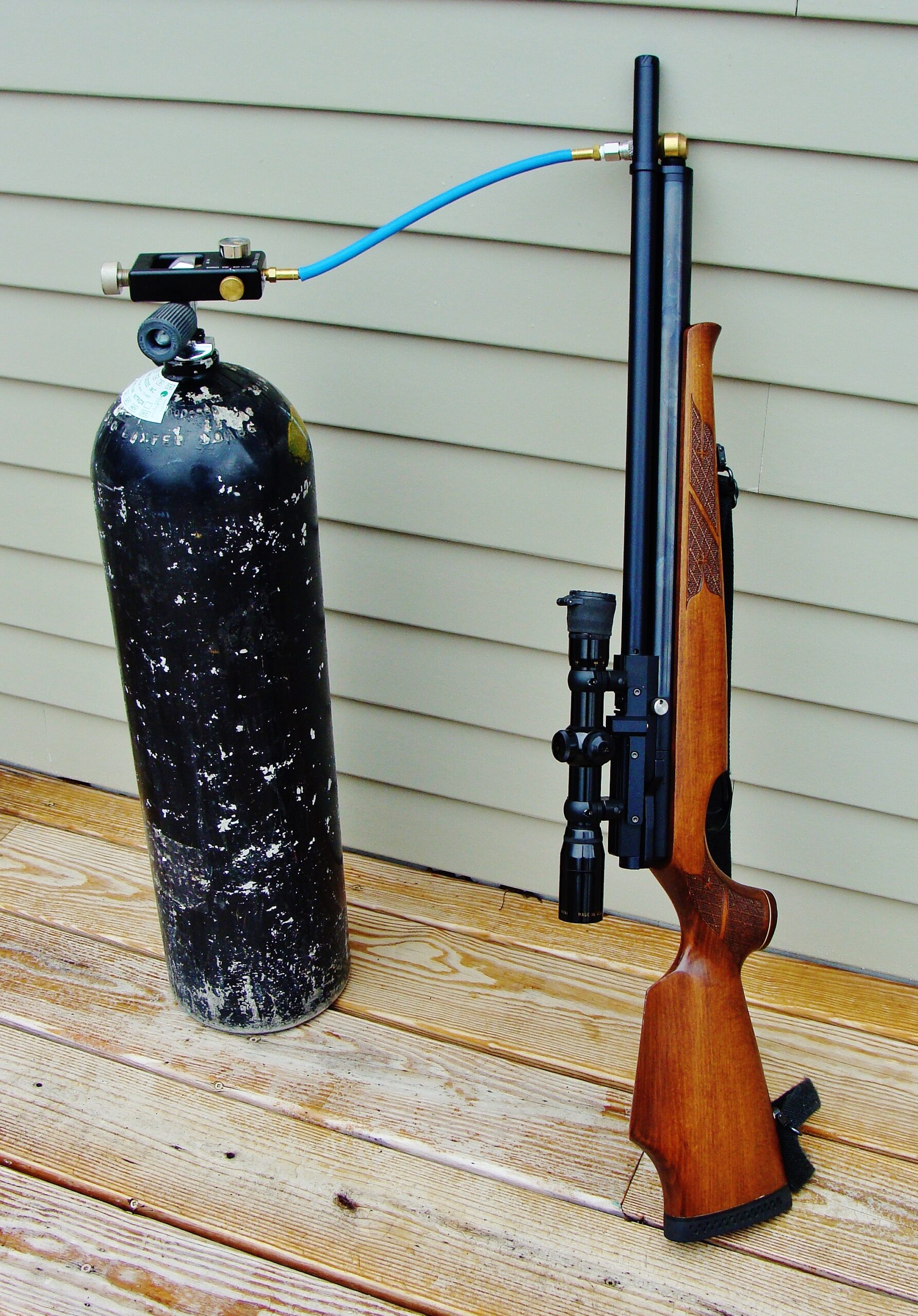
Scuba Tank
I shopped for a PCP gun with sufficient air capacity to cover a morning of hunting or pest control. My Air Arms, the largest of a couple versions, meets this need. Its capacious 288 CC air reservoir offers 45 useful shots at 920 fps when charged to 2900 PSI/190 BAR. That translates to lots of hand-pumping and, although I’m up to the task, given the price of the gun and moisture concerns, a tank is the logical alternative.
I bought a standard aluminum 80 cubic-foot tank “used” at a local sporting goods/dive shop for $100 (also on Amazon). Lacking current dive certifications, I also brought the airgun to allay liability concerns. As it turned out, I was one of several others in my area that owned pre-charged guns. Refills are just a few bucks.
When pressurized to around 3200 PSI with pure, moisture-free breathing air, my tank lasts a very long time. A main reason is I often don’t shoot through the gun’s entire capacity. Eventually, I picked up two more tanks, but one extra would’ve sufficed. The third is smaller and thus handier when stowed in a vehicle during longer-distance missions. I paid $150 for the last one. However, the charging connections (yoke and HP hose with fittings) will add another $100 or so, making a scuba system a wash compared to a decent pump.
Compressor
The standard shop-types won’t work, but an airgun model will do the job – for those willing to incur the expense. Many airgun aficionados own a compressor because it’s possible to a fill scuba tank as well as a PCP gun. A few newer types are also fairly compact and easier to handle than a full-size dive tank. Prices have also decreased and some now start at around $650 but, of course, others cost much more. Some will run on AC or DC power so, ss long as you have a compatible power source, an infinite supply of filtered HP air will be available. Fill-time for an average airgun is several minutes but an empty tank can take much longer.
Air Connections
Do you need male or female types, and what about fittings? The choices are a bit daunting. I wound up buying my yoke and hose from the local dive shop that sold me the scuba tank. We assembled the parts in the well-stocked store and made sure everything worked before I left. This happened 13 years ago when PCP technologies were still obscure. It’s still a viable option but life is now easier.
Today, several online airgun dealers make great starting points. Among them is Air Gun Depot. Scrolling through their website, you’ll see pumps, various tanks, and compressors. You’ll also see all kinds of HPA fittings and hoses, including some that are preassembled on pumps or scuba yokes. For what it’s worth, they also have an extensive airgun inventory.
Are PCP Air Rifles Worth the Money and Hassle?
I guess the answer to that depends on your budget and how often you intend to use your air gun. Recognizing the recent PCP surge, domestic airgun manufacturers like Crosman even offer kits with hand-pumps, making the purchase a bit easier.
The greater number of competing products and expanding network of airgun dealers have improved availability, while lowering costs to the point where some PCP guns now rival mid-grade springers. Crosman’s entry-level .22 caliber Benjamin Maximus utilizes a relatively small air reservoir but operates at lower pressure (2000 PSI) than most PCP guns, making it a perfect hand-pump candidate.
It’s available as a ready-to shoot kit, complete with a pump, for around $350. Thanks to careful engineering, the Maximus offers around 30 useful shots at 800 fps. Higher-grade guns are also available from this firm, including the now well-proven and more powerful Benjamin Marauder, available in .177, .22, and .25 caliber. Numerous others including some truly exotic offshore-built guns exist for those with deeper pockets.
One difference though: after “springing” for a tin of pellets, a springer can be unboxed and shot. The above extra gear PCP gear is not only a legitimate hurdle for many prospective buyers, but also tethers a gun to an air source. Granted, you could stow a hand-pump in a backpack, but the hassle-factor still increases.
Want More Information on PCP Air Rifles?
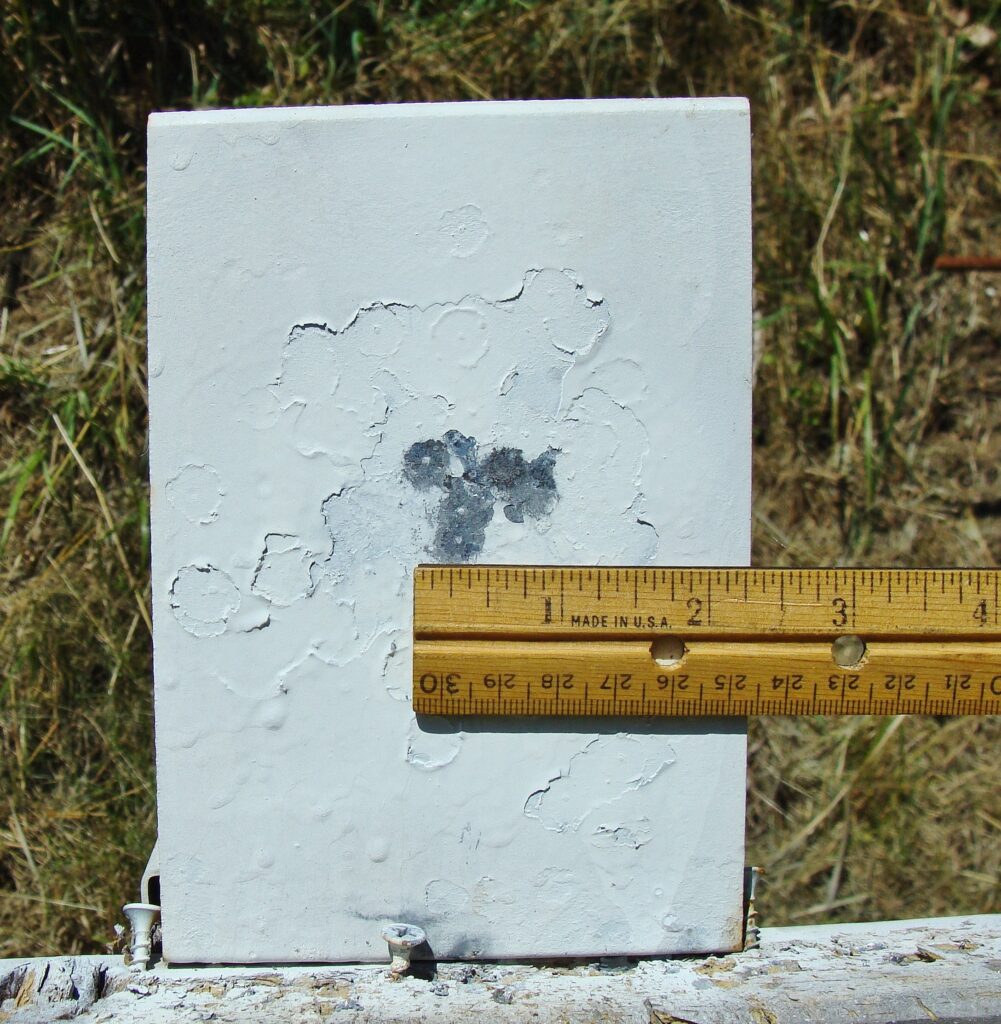
A possible fix for some who appreciate the utility of airguns involves acquisition of both technologies. In my case, a barrel-cocking .22 caliber Beeman R-9 springer is always on standby for use against marauding bird feeder pests, or for backyard plinking out to 50 yards on 4-inch reactive steel plates. More serious airgunning ventures call for a pre-charged gun (which can use the same .22 pellets). It’s precise accuracy, power, and stealthy report are ideal for small game hunting or pest control.
Better yet, the same steel targets are entirely doable out to 100 yards. Attachment of a bipod is easy and, when sighted in at 40 yards (my default zero), the requisite hold-over is analogous to my .308 at 650 yards! Given the increasing popularity of centerfire precision rifle events, the associated costs, and limited shooting opportunities, such scaled-down practice could justify a PCP purchase (plus, they’re a hoot to shoot).
